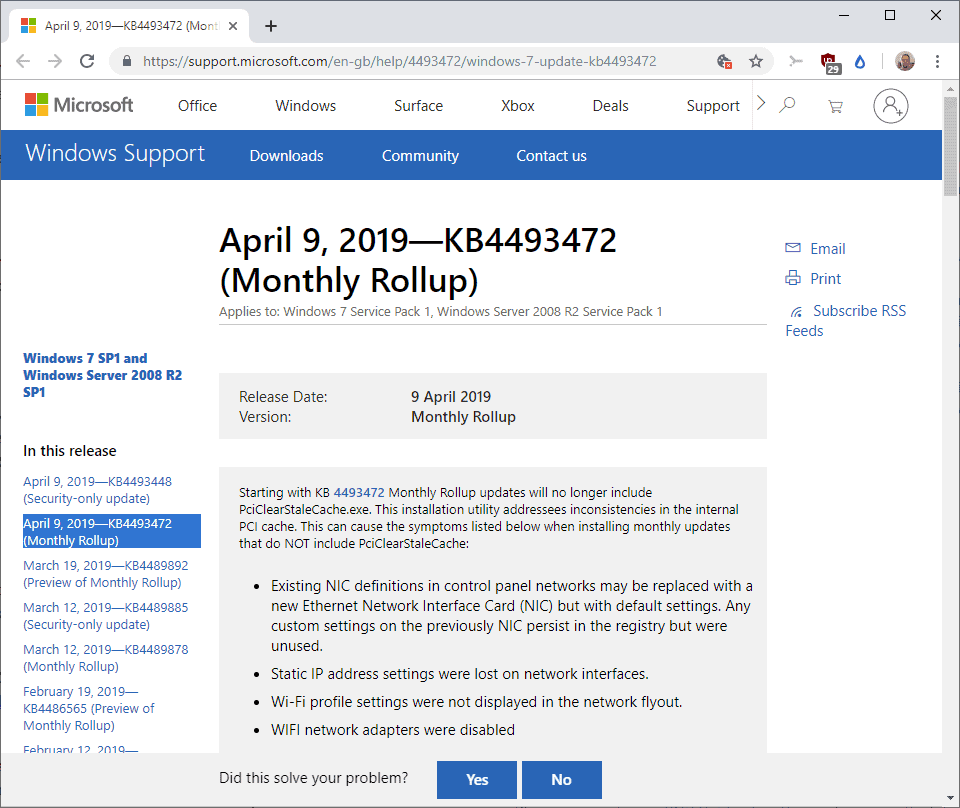Hello again. I asked for help a few years back and a gracious fellow solved the problem. He had me download a few programs the analyze. then we fixed the problem.
I have a laptop running win 7 64 bit. Pro. It says I have all the updates and hotfixes, Today I downladed Belarc Advisor and it says there are 14 important and critical fixes that are missing,
Not all the original M$ software is there, A lot has been removed over the years as I prefer to rin third party software.
Hotfix for Microsoft Windows 7 (32-bit, 64-bit) - Notebook. Windows Support Center Other Lenovo Brands. https://comnin.netlify.app/free-mp3-wma-converter-v2-2.html. Motorola Products.
Belarc says the issues found must be addressed. Those fixes may be for software that no longer exists, Can someone help me with this? I don't know what to do?
Not sure if I am in the right forum,
Thank You,
Al.
Microsoft Hotfix For Windows 7 Free Download
 -->
-->Syntax
Wcf Hotfix For Microsoft Windows 7
Description
The Get-Hotfix cmdlet gets hotfixes, or updates, that are installed on the local computer orspecified remote computers. The updates can be installed by Windows Update, Microsoft Update,Windows Server Update Services, or manually installed.
Microsoft Hotfix For Windows 7 32 Bit
Examples
Example 1: Get all hotfixes on the local computer
Serial port parity bits. Data bitsSpecify the number of data bits to transmit over the serialinterface.
The Get-Hotfix cmdlet gets all hotfixes installed on the local computer.
Example 2: Get hotfixes from multiple computers filtered by a string
The Get-Hotfix command uses parameters to get hotfixes installed on remote computers. The resultsare filtered by a specified description string.

Get-Hotfix filters the output with the Description parameter and the string Security thatincludes the asterisk (*) wildcard. The ComputerName parameter includes a comma-separatedstring of remote computer names. The Credential parameter specifies a user account that haspermission to access the remote computers and run commands.
Example 3: Verify if an update is installed and write computer names to a file
The commands in this example verify whether a particular update installed. If the update isn'tinstalled, the computer name is written to a text file.
Expert pdf editor free download. EXPert PDF Editor is the solution for viewing/printing and editing PDF documents. With eXPert PDF Editor you can view, navigate, manipulate, mark-up, and save PDF files while still maintaining the.
The $A variable contains computer names that were obtained by Get-Content from a text file. Theobjects in $A are sent down the pipeline to ForEach-Object. An if statement uses theGet-Hotfix cmdlet with the Id parameter and a specific Id number for each computer name. If acomputer doesn't have the specified hotfix Id installed, the Add-Content cmdlet writes thecomputer name to a file.
Example 4: Get the most recent hotfix on the local computer
This example gets the most recent hotfix installed on a computer.
Get-Hotfix sends the objects down the pipeline to the Sort-Object cmdlet. Sort-Object sortsobjects by ascending order and uses the Property parameter to evaluate each InstalledOndate. The array notation [-1] selects the most recent installed hotfix.
Parameters
Specifies a remote computer. Type the NetBIOS name, an Internet Protocol (IP) address, or a fullyqualified domain name (FQDN) of a remote computer.
When the ComputerName parameter isn't specified, Get-Hotfix runs on the local computer.
The ComputerName parameter doesn't rely on Windows PowerShell remoting. If your computer isn'tconfigured to run remote commands, use the ComputerName parameter.
| Type: | String[] |
| Aliases: | CN, __Server, IPAddress |
| Position: | Named |
| Default value: | None |
| Accept pipeline input: | True (ByPropertyName) |
| Accept wildcard characters: | False |
Specifies a user account that has permission to access the computer and run commands. Type a username, such as User01, Domain01User01, or enter a PSCredential object, generated by theGet-Credential cmdlet. If you type a user name, you're prompted for a password.
When the Credential parameter isn't specified, Get-Hotfix uses the current user.
| Type: | PSCredential |
| Position: | Named |
| Default value: | None |
| Accept pipeline input: | False |
| Accept wildcard characters: | False |
Get-HotFix uses the Description parameter to specify hotfix types. Wildcards are permitted.
| Type: | String[] |
| Position: | Named |
| Default value: | None |
| Accept pipeline input: | False |
| Accept wildcard characters: | True |
Filters the Get-HotFix results for specific hotfix Ids. Wildcards aren't accepted.
| Type: | String[] |
| Aliases: | HFID |
| Position: | 0 |
| Default value: | None |
| Accept pipeline input: | False |
| Accept wildcard characters: | False |
Inputs
Microsoft Shutdown Hotfix Windows 7
String
You can pipe one or more computer names to Get-HotFix. Windows server 2012 r2 oracle client 32 bit.
Outputs
System.Management.ManagementObject#rootCIMV2Win32_QuickFixEngineering
Get-HotFix returns objects that represent the hotfixes on the computer.
Download Microsoft Hotfix For Windows 7
Notes
The Win32_QuickFixEngineeringWMI class representsa small system-wide update, commonly referred to as a quick-fix engineering (QFE) update, applied tothe current operating system. This class returns only the updates supplied by Component BasedServicing (CBS). These updates are not listed in the registry. Updates supplied by Microsoft WindowsInstaller (MSI) or the Windows Update site are not returned byWin32_QuickFixEngineering. For more information, see Win32_QuickFixEngineering class.
The Get-HotFix output might vary on different operating systems.